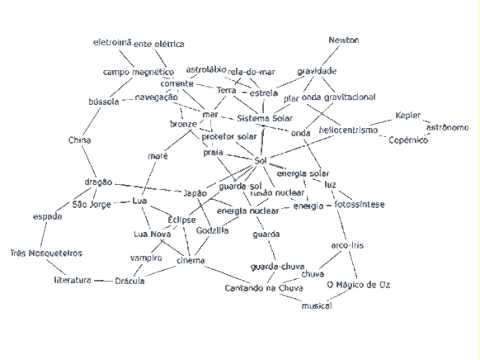When it comes to designing and engineering complex infrastructure projects, such as roads, highways, and bridges, Civil 3D engineering software is the tool of choice for professionals in the field. Developed by Autodesk, this powerful software solution combines advanced design and analysis capabilities with intuitive 3D modeling features, allowing engineers and designers to improve their efficiency, accuracy, and productivity.
With Civil 3D, engineers can easily create and edit large-scale infrastructure designs, using accurate survey data, aerial imagery, and GIS data. They can generate dynamic 3D models, complete with detailed surface, corridor, and pipe network designs. This level of detail enables engineers to analyze the impact of proposed design changes, identify potential problems, and optimize their designs for cost and performance.
Furthermore, Civil 3D also offers integrated tools for civil documentation, collaboration, and analysis. Engineers can generate detailed construction drawings, reports, and material quantities with ease. They can collaborate with other team members, including architects, planners, and contractors, by sharing their designs in a common data environment. Additionally, engineers can perform advanced analysis on their designs, such as drainage analysis, earthwork calculations, and clash detection, to ensure the safety and functionality of their projects.
Why Use Civil 3D Engineering Software?
When it comes to engineering design and documentation for civil infrastructure projects, using specialized software can greatly improve productivity and efficiency. One such software that stands out in the industry is Civil 3D, developed by Autodesk. Civil 3D is a powerful tool that combines the capabilities of traditional CAD software with specialized tools for civil engineering and infrastructure design.
There are several reasons why civil engineers choose to use Civil 3D for their projects. Firstly, the software offers a wide range of tools for creating accurate 3D models of construction projects, such as roads, highways, and bridges. These models can be used to visualize designs, perform virtual simulations, and analyze the impacts of various factors on the project’s performance.
Additionally, Civil 3D provides advanced tools for managing and analyzing survey data, which is crucial for accurate design and construction. This includes tools for importing and processing survey data, creating terrain models, and generating accurate contours and grading plans. The software also has built-in capabilities for designing and analyzing stormwater drainage systems, helping engineers ensure proper drainage and mitigate potential flooding risks.
Finally, using Civil 3D within the Autodesk AEC Collection for efficient project management offers several benefits in terms of collaboration and documentation. The software allows for seamless collaboration between different disciplines, such as civil engineers, architects, and MEP designers, as it supports interoperability with other Autodesk software. This ensures that all project stakeholders can work together in a coordinated and efficient manner, reducing errors and delays. Additionally, Civil 3D offers robust documentation capabilities, including automated plan and profile generation, quantity takeoffs, and dynamic design documentation updates.
- In conclusion, the use of Civil 3D engineering software offers numerous advantages for civil infrastructure projects. It enables engineers to create accurate 3D models, analyze data, design stormwater drainage systems, and collaborate effectively with other disciplines. By leveraging the capabilities of Civil 3D, civil engineers can improve productivity, accuracy, and overall project efficiency.
Streamlined Design and Drafting Processes
Streamlining design and drafting processes is crucial for efficient project management in the field of civil engineering. With the use of Civil 3D engineering software, designers and drafters can optimize their workflows and achieve greater productivity.
Autodesk AEC Collection, which includes Civil 3D, offers a comprehensive set of tools that enable engineers to streamline their design and drafting processes. These tools allow for the creation of 3D models, intelligent designs, and accurate documentation, all within a single software environment. This not only saves time but also reduces the chances of errors or miscommunication.
One of the main advantages of using Civil 3D is its powerful design automation capabilities. The software automates various design tasks, such as generating profiles, aligning roads, and calculating earthwork volumes. This reduces the manual effort required and ensures consistency in design output.
Moreover, Civil 3D allows for collaborative design and drafting. Multiple team members can work on the same project simultaneously, accessing and updating the design data in real-time. This greatly improves coordination and reduces the need for manual data exchange, leading to smoother and more efficient project execution.
By leveraging the features and capabilities of Civil 3D and Autodesk AEC Collection, civil engineering professionals can streamline their design and drafting processes, resulting in improved productivity, accuracy, and collaboration. Autodesk AEC Collection provides a comprehensive set of tools for efficient project management in the field of civil engineering.
Improved Collaboration and Communication
In today’s fast-paced engineering projects, effective collaboration and communication are crucial for project success. With the use of Civil 3D engineering software, engineers and designers can greatly enhance their ability to work together efficiently and seamlessly.
Autodesk AEC Collection, which includes Civil 3D, provides powerful tools for streamlining collaboration and communication throughout the entire project lifecycle. It allows different team members to work on the same project simultaneously, making it easier to coordinate tasks and avoid duplication of effort. Additionally, the software allows for real-time collaboration, enabling team members to instantly view and edit each other’s work, leading to increased productivity and faster project completion.
The software also offers advanced communication features, such as markups and annotations, to facilitate effective communication between team members. With these tools, engineers can easily share their design ideas, provide feedback, and address any issues or concerns in a clear and organized manner. This eliminates the need for lengthy email exchanges or physical meetings, saving time and improving overall project efficiency.
Furthermore, Autodesk AEC Collection provides a centralized platform for storing and accessing project data, making it convenient for team members to retrieve information and stay updated on the latest developments. This ensures that everyone has access to the most up-to-date project files, reducing the risk of errors caused by working with outdated information.
In conclusion, by using Civil 3D engineering software and the Autodesk AEC Collection, engineers and designers can significantly improve collaboration and communication, leading to more efficient project management and successful project outcomes. With its powerful features and intuitive interface, the software enhances teamwork, streamlines communication, and ensures that everyone is on the same page throughout the entire project lifecycle.
Accurate and Efficient Project Documentation
Accurate and efficient project documentation is crucial for successful engineering projects. Civil 3D engineering software offers powerful tools and features that facilitate the creation of precise and detailed project documentation. With its advanced design capabilities, users can easily generate accurate plans, sections, and profiles, ensuring that all crucial project details are captured and correctly represented.
Autodesk AEC Collection, a comprehensive set of software tools for efficient project management, complements the capabilities of Civil 3D. With this collection, engineers and designers can combine the power of Civil 3D with other software applications to streamline their workflow and enhance project documentation. The collection includes a range of applications such as Revit, Navisworks, and InfraWorks, which provide additional functionalities for project collaboration, visualization, and analysis.
Incorporating Autodesk AEC Collection into the project workflow can bring several benefits:
- Increased productivity: The integrated tools in the AEC Collection allow for seamless data exchange and collaboration among different disciplines, saving time and minimizing errors in project documentation.
- Better decision-making: The collection’s visualization and analysis tools enable engineers to gain better insights into their designs, making informed decisions and optimizing the efficiency of engineering projects.
- Enhanced project coordination: By using the collaborative features of the AEC Collection, team members can easily coordinate their work, ensuring that project documentation is accurate and up-to-date.
- Improved project communication: With the help of visualization tools like Revit and InfraWorks, engineers can effectively communicate their design intent to stakeholders and clients, facilitating a clearer understanding of the project.
Overall, the combination of Civil 3D engineering software and Autodesk AEC Collection provides a powerful and efficient solution for accurate project documentation. By adopting these tools, engineering professionals can achieve higher quality designs, reduce errors, and optimize project delivery.
Effective Analysis and Simulation Tools
In the field of civil engineering, effective analysis and simulation tools are essential for ensuring the success of projects. Civil 3D engineering software, such as Autodesk AEC Collection, provides powerful tools that enable engineers and designers to analyze, simulate, and optimize various aspects of projects.
One of the key advantages of using Civil 3D is its ability to perform hydraulic and hydrologic analysis. Engineers can simulate the flow of water in a project area, analyze stormwater runoff, and design effective drainage systems. With accurate and reliable simulations, potential issues can be identified early on, allowing for appropriate design modifications and cost-saving measures.
Furthermore, Civil 3D software offers advanced analysis capabilities for land development projects. Engineers can analyze the terrain, including contours, slopes, and cut and fill volumes, to optimize site grading and earthwork operations. This ensures the efficient use of resources and minimizes expensive earth-moving operations.
The simulation tools in Civil 3D also facilitate the evaluation of transportation projects. Engineers can simulate traffic flow, analyze road alignments, and optimize intersections and roundabouts. This enables the identification of potential traffic bottlenecks and allows for the design of efficient and safe road networks.
In conclusion, effective analysis and simulation tools provided by Civil 3D engineering software, such as Autodesk AEC Collection, play a crucial role in ensuring the success of civil engineering projects. By allowing engineers to analyze and simulate various aspects of projects, these tools enable them to make informed decisions, optimize designs, and minimize risks. To effectively manage civil engineering projects, professionals should consider utilizing Autodesk AEC Collection for efficient project management.
Enhanced Visualization and Presentation Capabilities
Civil 3D engineering software offers enhanced visualization and presentation capabilities, allowing users to create compelling and realistic visualizations of their design projects. With the help of advanced rendering tools, users can create high-quality 3D models that accurately represent the planned infrastructure.
The software’s visualization capabilities go beyond simple 3D models. Users can easily add materials, textures, and lighting effects to their designs, creating realistic and immersive visualizations. This can help stakeholders and clients better understand the proposed project and make more informed decisions.
Additionally, Civil 3D allows users to create interactive visualizations, where viewers can explore the design in real-time. This is especially useful for public presentations or community engagement meetings, as it allows participants to actively interact with the design and provide feedback.
Furthermore, the software provides tools for creating visual representations of data, such as charts and graphs, which can be incorporated into the design presentation. This helps to convey complex information in a clear and concise manner, facilitating effective communication with stakeholders.
Overall, Civil 3D’s enhanced visualization and presentation capabilities contribute to more efficient project management and improved decision-making. By providing realistic and interactive visualizations, the software helps to effectively communicate design intent, engage stakeholders, and ultimately achieve successful project outcomes.
For efficient project management and maximizing the potential of Civil 3D, consider utilizing the Autodesk AEC Collection. This comprehensive collection of software includes a range of tools specifically designed for the architecture, engineering, and construction industry, allowing for seamless integration and collaboration throughout the project lifecycle.
Compliance with Industry Standards and Regulations
Civil 3D engineering software is designed to adhere to industry standards and regulations to ensure that engineering projects are compliant with legal requirements and best practices. By using this software, engineers can ensure that their designs and plans meet the necessary criteria set by regulatory bodies and industry organizations.
One of the key benefits of using Civil 3D is its built-in tools and features that enable engineers to design and draft according to industry standards. The software includes libraries of standard symbols, blocks, and templates that comply with various industry standards, such as American National Standards Institute (ANSI) or International Organization for Standardization (ISO) standards. This allows engineers to easily create designs that meet the required specifications and can be easily understood by other professionals.
In addition to compliance with industry standards, Civil 3D also helps engineers ensure that their projects are in line with regulatory requirements. The software provides tools for performing engineering calculations, such as grading and earthwork volume calculations, which help engineers meet specific regulations related to site development and environmental impact. Civil 3D also supports the creation of documentation and reports that may be required by regulatory agencies, saving engineers time and effort in compiling necessary information.
Overall, Civil 3D engineering software streamlines the design and drafting processes while also promoting compliance with industry standards and regulations. By integrating these requirements into the software, engineers can focus on creating innovative and high-quality designs that are both compliant and efficient. Whether it’s meeting specific building codes or adhering to environmental regulations, Civil 3D provides the tools and resources necessary for engineers to ensure their projects are in accordance with the prevailing industry standards and regulations.
Characteristics
| Support | Online and Phone |
Short description
Ensure your company’s compliance with industry standards and regulations by utilizing the Autodesk AEC Collection for efficient project management. This comprehensive software package offers a suite of powerful tools that help you stay up to date with the latest requirements and ensure that your projects meet all necessary regulations. With features such as BIM capabilities, collaboration tools, and seamless interoperability, the Autodesk AEC Collection is the perfect solution for architects, engineers, and construction professionals looking to streamline their workflow and achieve compliance with ease. Trust in this industry-leading software to ensure your company’s success and reputation in the market.
Description
Compliance with industry standards and regulations is a critical aspect of any business operation. In today’s highly regulated business environment, companies must ensure that they meet all the necessary requirements set forth by governing bodies and industry associations. Failure to comply with these standards not only puts a company at risk of legal and financial penalties, but it can also damage its reputation among customers and partners.
Industry standards and regulations are put in place to maintain fairness, safety, and accountability within specific sectors. These standards outline the minimum requirements that companies must adhere to in order to meet basic industry expectations. They cover a wide range of areas, including quality control, environmental sustainability, data security, and ethical practices.
Compliance with industry standards and regulations requires a proactive approach from businesses. Companies must conduct regular audits and assessments to ensure that they have the necessary policies and procedures in place to comply with these standards. This may involve implementing new technology, training employees, or making changes to existing processes.
Overall, compliance with industry standards and regulations is not only a legal requirement but also a necessary step to ensure the long-term success and sustainability of a business. It is essential for companies to stay up to date with the latest industry standards and regulations, as they can change over time. By prioritizing compliance, businesses can position themselves as trustworthy and reliable partners in their respective industries.
Cómo citar: Conogasi, A. (2024, 26 de Enero ) Civil 3D engineering software.1. Conogasi, Conocimiento para la vida. Fecha de consulta: Octubre 10, 2025
Esta obra está disponible bajo una licencia de Creative Commons Reconocimiento-No Comercial Compartir Igual 4.0





Deja un comentario
Sé el primero en comentar!